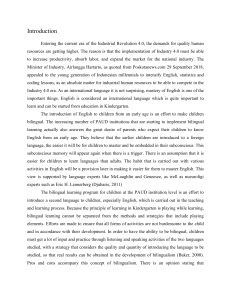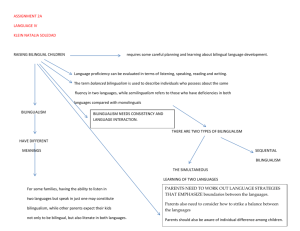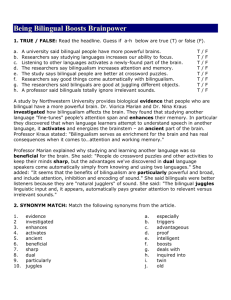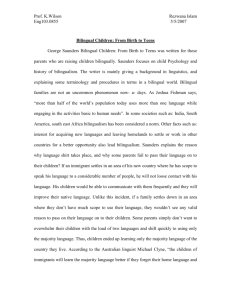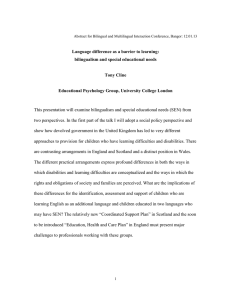userfiles/files/bilingual tips
advertisement
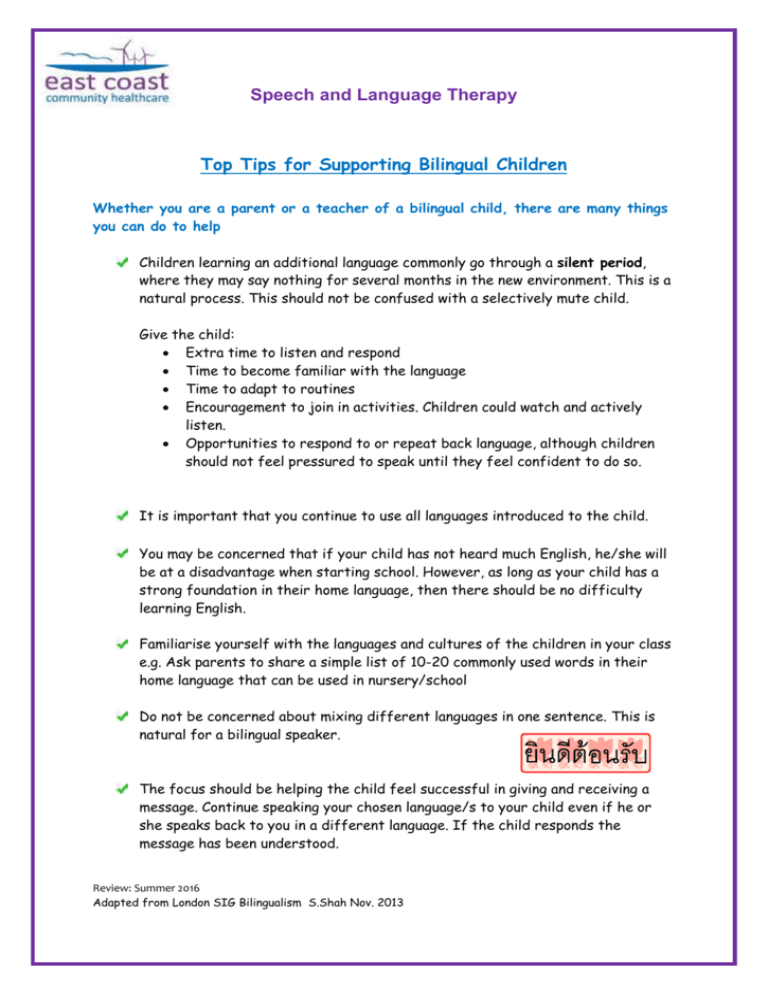
Speech and Language Therapy Top Tips for Supporting Bilingual Children Whether you are a parent or a teacher of a bilingual child, there are many things you can do to help Children learning an additional language commonly go through a silent period, where they may say nothing for several months in the new environment. This is a natural process. This should not be confused with a selectively mute child. Give the child: Extra time to listen and respond Time to become familiar with the language Time to adapt to routines Encouragement to join in activities. Children could watch and actively listen. Opportunities to respond to or repeat back language, although children should not feel pressured to speak until they feel confident to do so. It is important that you continue to use all languages introduced to the child. You may be concerned that if your child has not heard much English, he/she will be at a disadvantage when starting school. However, as long as your child has a strong foundation in their home language, then there should be no difficulty learning English. Familiarise yourself with the languages and cultures of the children in your class e.g. Ask parents to share a simple list of 10-20 commonly used words in their home language that can be used in nursery/school Do not be concerned about mixing different languages in one sentence. This is natural for a bilingual speaker. The focus should be helping the child feel successful in giving and receiving a message. Continue speaking your chosen language/s to your child even if he or she speaks back to you in a different language. If the child responds the message has been understood. Review: Summer 2016 Adapted from London SIG Bilingualism S.Shah Nov. 2013 Use short phrases with lots of gesture and facial expression, as well as expression in your voice. This will help the child understand the meaning behind the words. Encourage the child’s attempts to communicate in either language, giving lots of praise. It is okay for children to speak in their home language when they are at school Model language for the child, model back what they say and extend it by adding one or two extra words. Use nursery rhymes and stories from any culture/language. Play word association games, e.g. think of 5 types of fruit, transport or furniture – this will help your child increase his/her vocabulary. As your child gets older you can do this in more than one language. How can Speech and Language Therapy Help The Speech & Language Therapy profession recognises that Bilingualism in a child is an advantage to learning. Strategies recommended by your Speech and Language Therapist can be used in your language and your child’s new language. Advice and reports from your Speech and Language Therapy Department can be provided in any language. Discuss this with your Speech & Language Therapist. Review: Summer 2016 Adapted from London SIG Bilingualism S.Shah Nov. 2013



